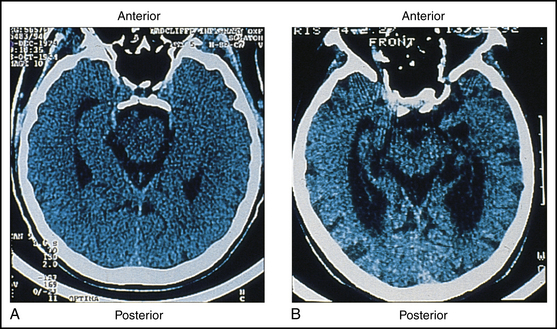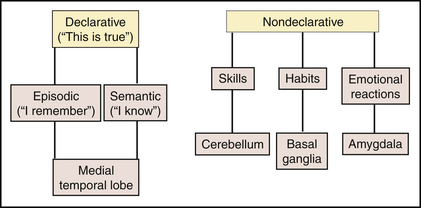46 CASE 46
LABORATORY STUDIES
CT: Significant atrophy of the parietal, temporal, and frontal lobes of the cerebral cortex and degeneration of the cingulate gyrus (Fig. 46-1)
PATHOPHYSIOLOGY OF KEY SYMPTOMS
Long-term memories can be characterized as either declarative or nondeclarative memory. Declarative memory is explicit and includes complex associations including the event, the surroundings, and the significance of the event. Declarative memory is frequently stored in the temporal lobes. In contrast, nondeclarative memory is associated with complex motor abilities, such as being able to eat with a fork, habits, or emotional responses. The components of nondeclarative memories can be stored throughout the brain, including the cerebellum, basal ganglia, or amygdala (Fig. 46-2).
< div class='tao-gold-member'>
Only gold members can continue reading. Log In or Register to continue
Stay updated, free articles. Join our Telegram channel

Full access? Get Clinical Tree




